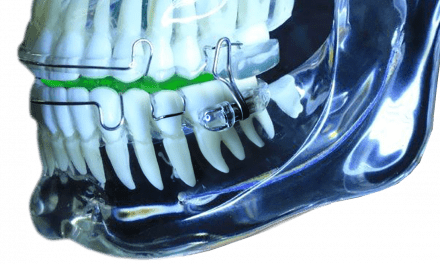Many anticipated that sleep apnea patients would struggle to continue their CPAP treatment during the pandemic, but published data paints a different picture.
By Lisa Spear
When reports of the novel coronavirus first began to crop up around the globe, insomnia rapidly spread with it, at a pace that seemed to rival the deadly respiratory pathogen. At the same time, many sleep medicine clinics shuttered and some operations slowed to a crawl, open only with skeleton crews.
Many anticipated that obstructive sleep apnea (OSA) patients would struggle to continue their care during the public health crisis, especially since in the early days of the outbreak, fear circulated around the risk of CPAP aerosolizing the virus. In Toronto, firefighters were even banned from using CPAP at work. And a severe outbreak that struck a Washington State nursing home had been traced back to the use of a CPAP device.
Contrary to those initial concerns, some physicians, as well as patient surveys in multiple countries, have shown that patients have diligently continued to use their positive airway pressure (PAP) therapy. With a more acute concern for respiratory health, many people have become more interested in using PAP devices or have started therapy for the first time, says board-certified sleep medicine specialist Michael Thorpy, MD, director of the Sleep-Wake Disorders Center at the Montefiore Medical Center in New York.
“We are seeing a lot of patients who are concerned about COVID, who are contacting us because they know that they have sleep apnea and they want to get on CPAP,” says Thorpy, a professor of clinical neurology at Albert Einstein College of Medicine.
A large online survey of OSA patients in France found the pandemic has had limited impact on CPAP use. Primarily just those with suspected or confirmed COVID-19 stopped CPAP use, sometimes without a physician’s advice, and were more likely to move to a separate bedroom, according to the paper published in ERJ Open Research.1
Of the 15, 306 people surveyed from 93 metropolitan areas, covering most of France, only 4.4% had stopped CPAP treatment during the COVID-19 health crisis.
Another study, looking at electronic medical records of patients at Boston’s Sleep and Circadian Disorder clinics at Brigham Health, found no change in PAP use.2
Thorpy says many patients have been diligent in their continued therapy because the risk factors associated with severe disease in COVID-19 are regularly seen in sleep apnea, including obesity and diabetes.3
While the available evidence is sparse that COVID manifests in more severe illness for OSA patients, many feel their PAP therapy could protect them from serious symptoms if they were to become ill, he says.
In a telephone questionnaire survey of 112 patients in New York City currently undergoing care for OSA, 63% of respondents said they were concerned that their sleep disorder made them more likely to experience greater medical complications from the coronavirus.
Eighty-eight percent of those surveyed in New York City reported that they continued to use PAP therapy as prescribed during the pandemic and 20% said they were using their therapy device more. The survey, which was conducted over two weeks in late April and early May, was published in the journal Sleep Medicine.4
“I think there is an awareness out there that if you’ve got sleep apnea, you may be at greater risk if you were to get COVID,” says coauthor Thorpy.
Nationwide, data collected from one of the largest distributors of CPAP machines in North America, Philips Respironics, also found no detectable change in device use during the pandemic.
Initial fears that CPAP could contribute to the spread of the coronavirus may have spurred a temporary drop in use in some patients. In fact, medical device company SleepData reported an overall dip in PAP adherence during the months of April and March.
A sleep medicine specialist and scientist in Washington D.C., Gustavo Nino, MD, MSHS, DABSM, says some of his patients expressed concerns about PAP spreading the pathogen. Some of his patients now prefer to use their devices in a designated room, away from family members.
“There is the risk of aerosolized transmission with the usage of CPAP and biPAP, so people are being really careful,” says Nino.
However, overall available data suggests that patients’ interest in continuing to manage their OSA has outweighed any trepidation about their CPAP device spreading the virus. Due to the rise of remote monitoring and telemedicine, a representative at medical device company ResMed says the company anticipates adherence will go up.
“Adherence rates increase when a patient is being monitored remotely by their doctor and tracks their own use on a smartphone app, even in times like this,” says Arturo Garcia, ResMed’s senior project manager of connected solutions.
A Sleep Review survey from April showed a large percentage of providers were exploring new remote options. Additionally, since January of 2020, Philips Respironics reported a 34.5% increase in the average number of devices connecting to their cloud-based patient management services on a daily basis.
“This shows us that our remote monitoring services remain in high demand and we see this trend continuing as the industry evolves to adopt to virtual care more broadly moving forward,” says Sonal Matai, business leader of North America Sleep & Respiratory Care at Philips.
A physician board-certified in pediatric pulmonology, Nino agrees that telemedicine and remote monitoring have the potential to shape the future of sleep medicine care.
However, while much of the data around CPAP adherence during the pandemic is positive, he says not everyone is having an easy time continuing therapy.
The stress and deregulation of sleep schedules can make it more challenging to keep up with treatment. One recent case report of a 15-year-old African American male patient with moderate OSA showed how his adherence dramatically reduced at the start of the COVID-19 pandemic.5
The social isolation and the disruption to regular life for some patients has resulted in decreased access to health care and interrupted multiple clinic visits, the authors wrote.
“Patients with chronic illness who require close monitoring and various medications are at a higher risk during a lockdown. It is likely that such a lockdown not only affects medication compliance, but may also affect CPAP adherence, as noted in our patient,” the paper says.
Also, insomnia can pose obstacles for people trying to prioritize their health. One study, published in the Journal of Clinical Sleep Medicine, notes an increased number of patients reported insomnia after the lockdown, which has the potential to disrupt routines.6
“The usage of CPAP requires, of course, really appropriate sleep timing and a good routine,” says coauthor Nino, an assistant professor in the Division of Pulmonary and Sleep Medicine at Children’s National Hospital in Washington D.C.
“The quarantine and the social distance have created a significant challenge for families to keep on a schedule,” says Nino.
Despite these challenges, Nino says there are ways to help patients overcome obstacles, including educating patients on how to download their own data on CPAP devices. “In my practice, I find that people are more and more familiar with the technology and more into accessing their data,” he says.
In the case report, the clinicians reviewed the CPAP usage cloud-based data, obtained remotely, with the patient’s family and highlighted how the adherence changed before and during the lockdown.
“The parent was unaware of the trend and was appreciative that she had this pointed out to her. After that, we discussed once again the morbidities of OSA, the importance of a good sleep routine, and adherence to PAP therapy given the patient’s health history,” the authors explain.
One week after a follow-up telehealth visit with the patient, his adherence to therapy had increased to 100%, higher than before the start of the pandemic. This illustrates the importance of continuing to keep in touch with patients and counsel them on the role of their therapy in their health.
“Now more than ever, it is important for people to keep medical appointments,” says Nino. “Even just with telemedicine visits we are able to get them back on track. It is a good time to get familiar with telehealth. I feel that this is something that is going to be very helpful, both now, and in the future.”
Lisa Spear is associate editor of Sleep Review.
References:
1. Pépin JL, Sauvaget O, Borel JC, Rolland C, et al. Continuous positive airway pressure-treated patients’ behaviours during the COVID-19 crisis. ERJ Open Research 2020;6(4)00508-2020.
2. Batool-Anwar S, Omobomi OS, Quan SF. Impact of the novel coronavirus disease on treatment adherence and sleep duration in patients with obstructive sleep apnea treated with positive airway pressure. Journal of Clinical Sleep Medicine. 2020; 15;16(11):1917-1920.
3. Miller MA, Francesco P, Cappuccio. A systematic review of COVID-19 and obstructive sleep apnoea. Sleep Medicine Reviews. 2020;8;55:101382.
4. Thorpy M, Figuera-Losada M, Ahmed I, Monderer R, et al. Management of sleep apnea in New York City during the COVID-19 pandemic. Sleep Medicine. 2020 ;(74) 86-90.
5. Naime S, Weiss M, Nino G. Effects of COVID-19 pandemic on adherence to obstructive sleep apnea therapy: A case report. Clinical Case Reports. 2020;00: 1– 3.
6. Batool-Anwar S, Omobomi OS, Quan SF. Impact of the novel coronavirus disease on treatment adherence and sleep duration in patients with obstructive sleep apnea treated with positive airway pressure. Journal of Clinical Sleep Medicine. 2020; ;16(11):1917-1920.





